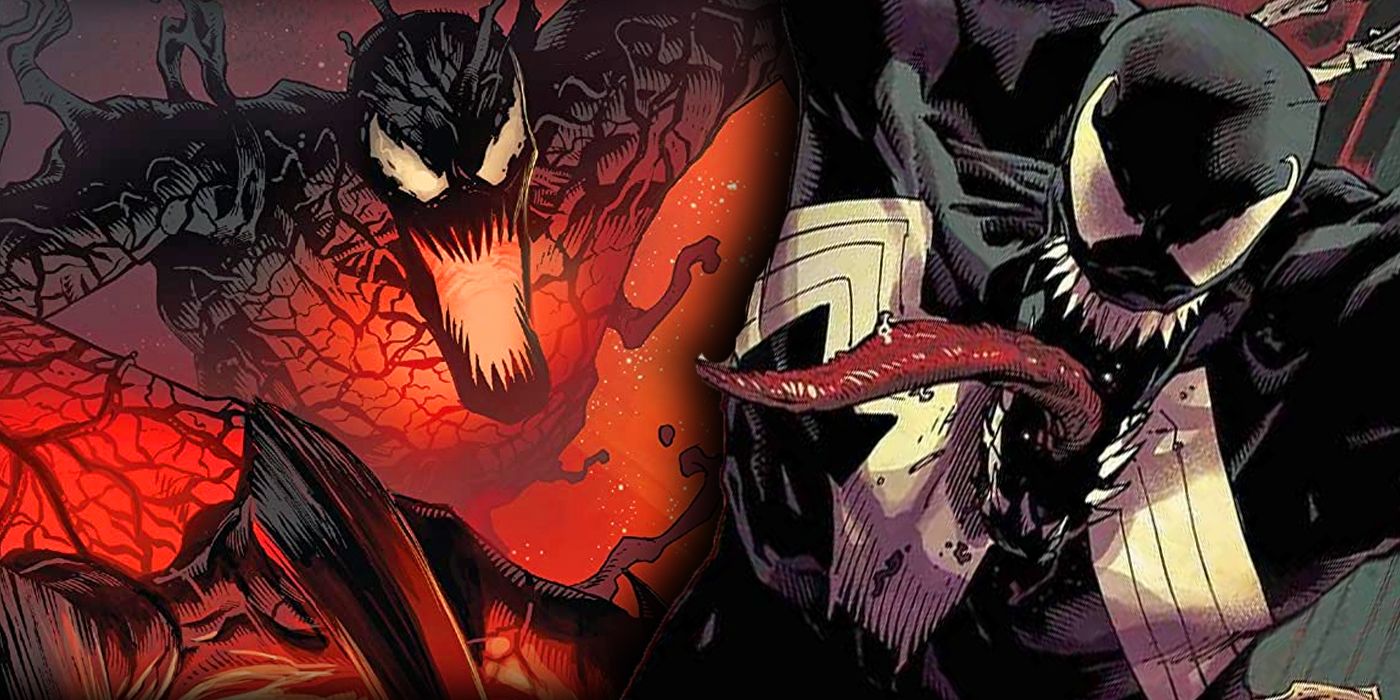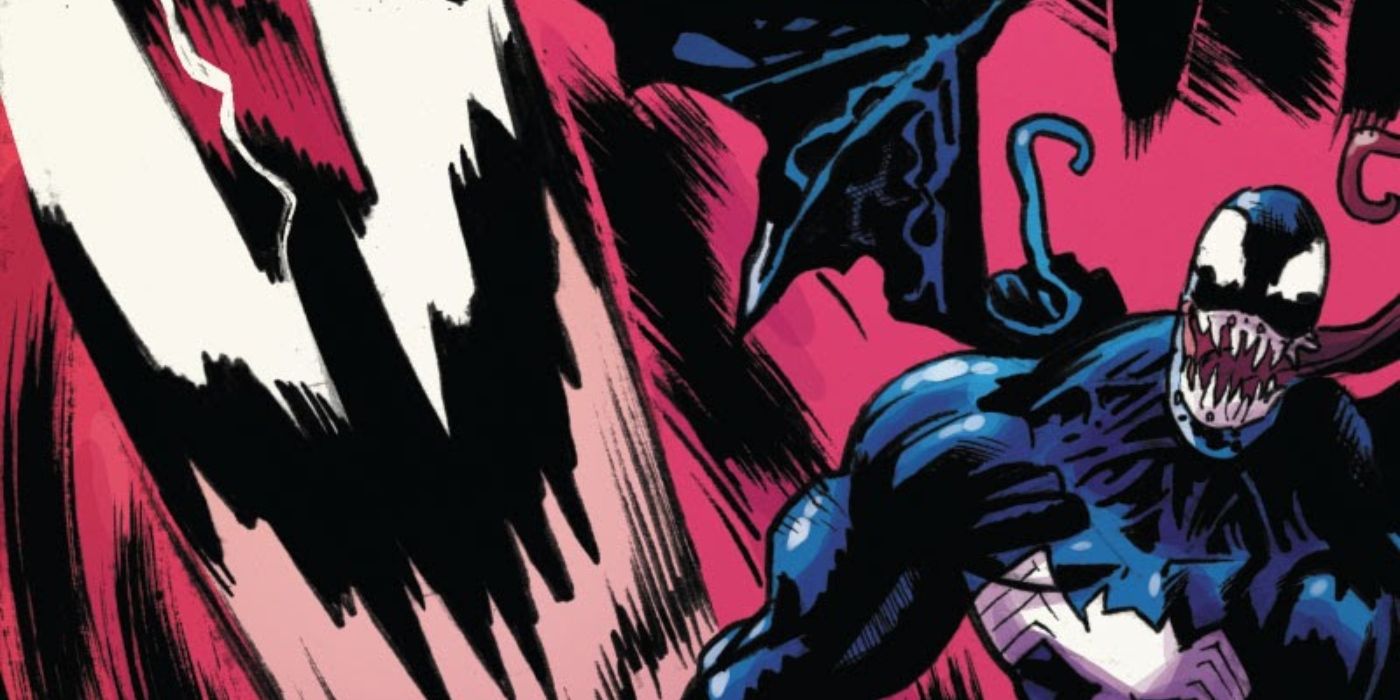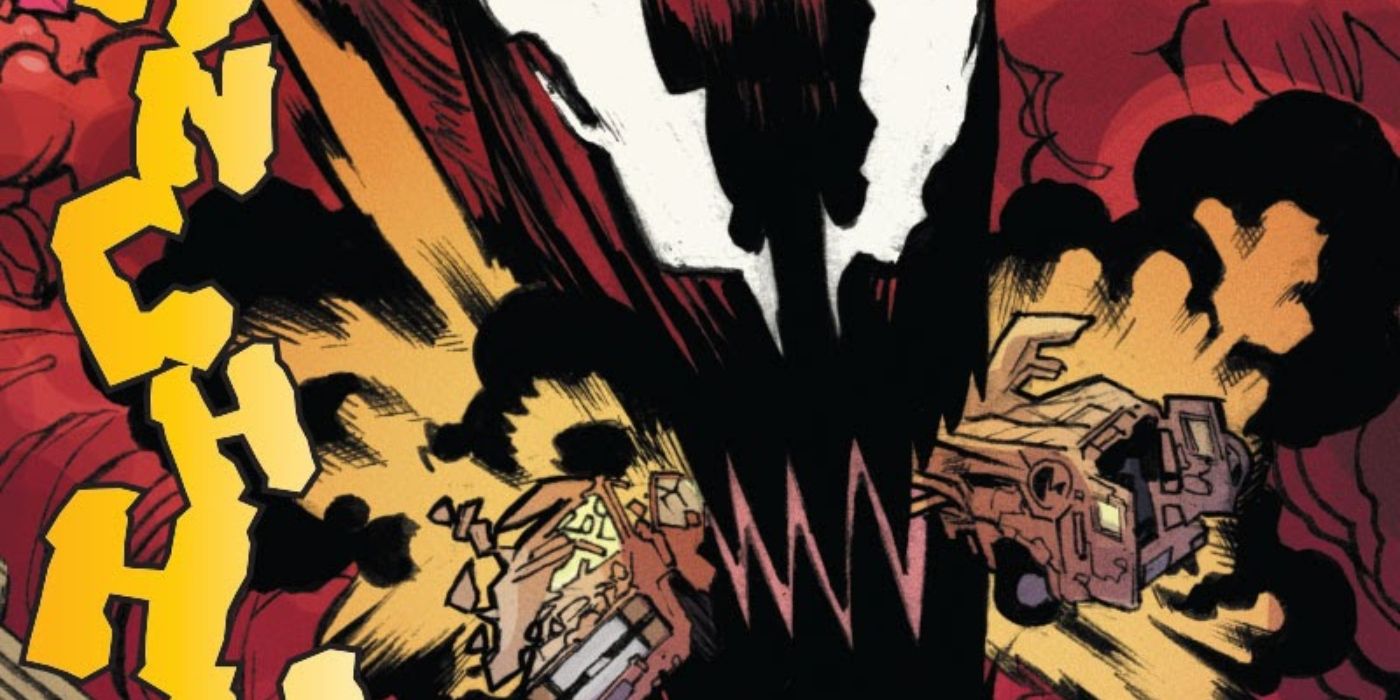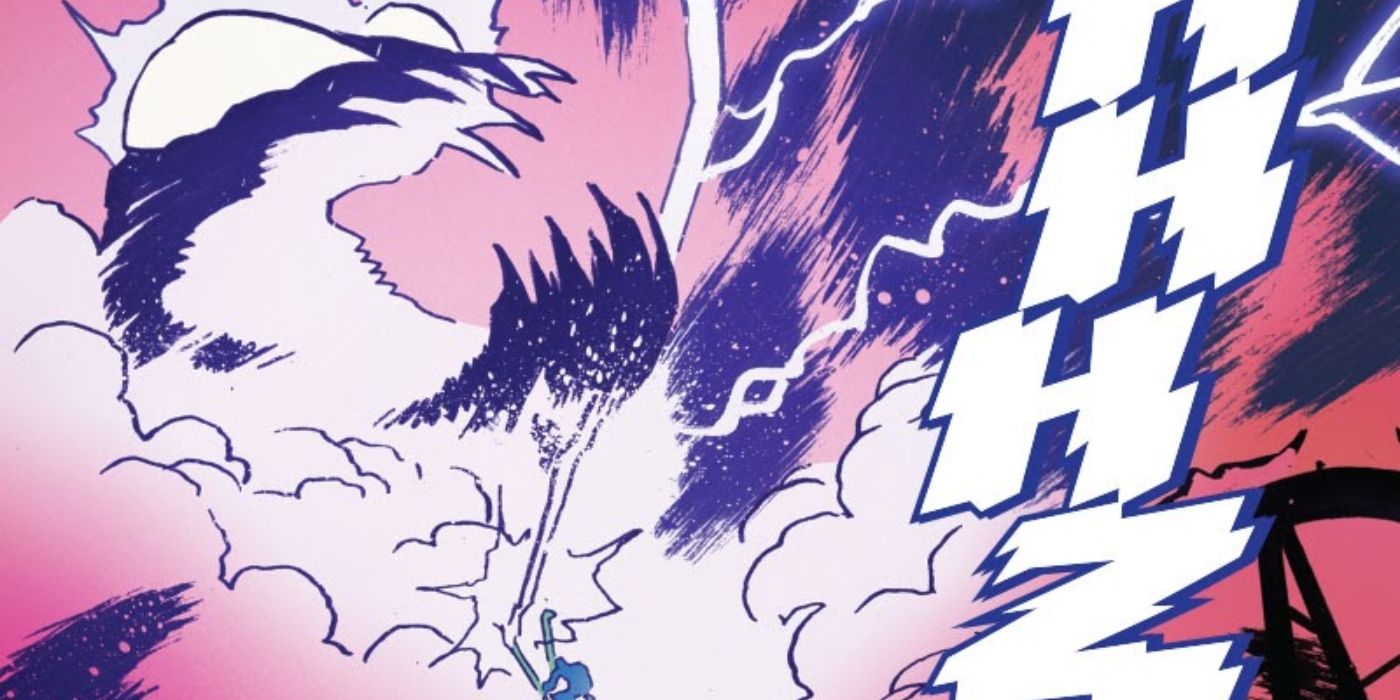WARNING: The following article contains spoilers for Venom-Carnage: Infinity Comic #3, available now on Marvel Unlimited.
In the Marvel Unlimited digital series Venom-Carnage: Infinity Comic #3, Marvel's two most famous symbiotes, Venom and Carnage, met for a battle that has torn Las Vegas apart. But while the two duked out across the Vegas strip, Carnage put a far more devious plan into motion that saw him take on a menacing new form. At first, Venom assumed he was merely trying to poison the water supply with his symbiote, but Carnage was actually playing a much grander game.
Taking advantage of the local climate and meteorological events, Carnage bonded himself with a type of dust storm known as a haboob in Karla Pacheco, Scott Hepburn, Ian Herring, VC's Joe Caramagna's Venom-Carnage #3. By essentially taking the shape and scope of the Storm, Carnage attained his biggest, most destructive form ever. On his own, Venom was not enough to defeat him like this, and he also ended up using the weather to his advantage.
A haboob is essentially an intense dust thunderstorm carried over by a weather front, which means that it has a massive cloud of dust and rain. Carnage, by dispersing himself into the atmosphere near the dam he was trying to infect, managed to put enough of himself into the air to seize control of the storm, transforming him into a shapeless symbiote storm giant. In this form, Carnage was basically a psychopathic child destroying the toys all around him. His gigantic size allowed him to literally stand over and even cover all of Las Vegas with his storm.
However, Carnage didn't become some immaterial ghost shrouding the world in darkness. Carnage was still physical enough to knock Venom around the city mercilessly. Even when Venom tried to fight back, it wasn't a fair battle. Carnage's size meant he had a distinct advantage. Even worse, due to the fact that the storm was him, there was no single blow Venom could make that would injure him severely enough to save the city.
With his conventional methods exhausted, Eddie realized that he could use the same weather that was empowering Carnage to weaken him. He just had to time it right. The thunderstorm that carried the dust over was still causing bursts of electricity, something Carnage used early to trigger a citywide blackout and blanket Las Vegas in darkness. Unfortunately, Cletus Kasady is just as crafty in an overpowered giant form as he is at regular height.
But his use of the storm showed Venom he could use it too. Escaping Carnage's clutches, Venom scaled a nearby rollercoaster, letting Carnage follow behind just close enough for his plan to work. Ripping off parts of the metal track and fashioning weapons out of them, as well as a brace around himself, Venom jumped at Carnage. The resulting charge directed a bolt of lightning through himself and into Carnage, destabilizing the gigantic form and sending both of them crashing into the ground.
Even though the form is gone, it demonstrates how versatile a symbiote can truly be. When people like Spider-Man use a symbiote, they view it as a power boost. But Cletus Kasady sees the Carnage symbiote as a way to improve his "craft" He got a major boost to his ability to murder when he first bonded with the symbiote, but Kasady has been striving for new ways to make killing people fun.
With this transformation, Carnage has essentially recreated the massive, city-size form he had in promotional material for Maximum Carnage within the Marvel Universe. Even though Carnage just unleashed perhaps his deadliest physical form, the truly unsettling thing is that his attitude during the entire fight was casual. This serves as a stark reminder of the immense power Carnage can potentially wield and how he seems frighteningly at ease putting it to use.




